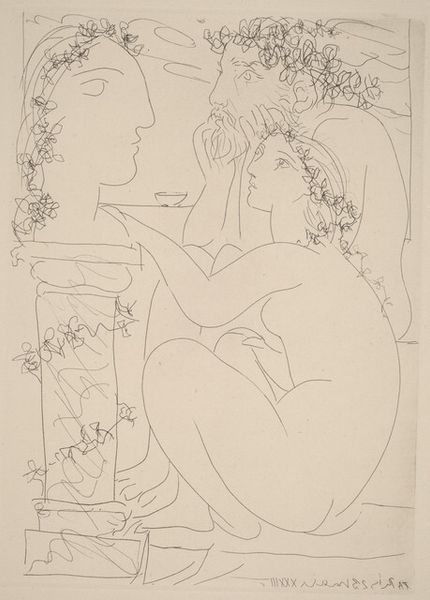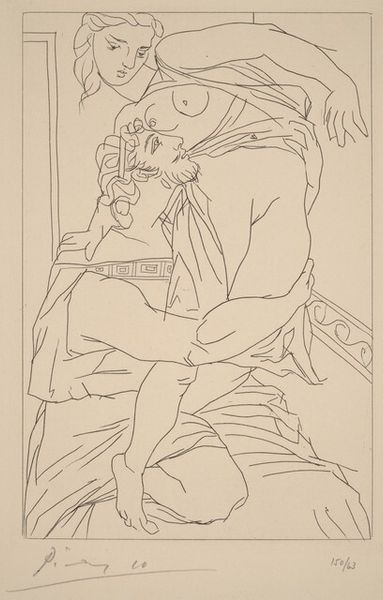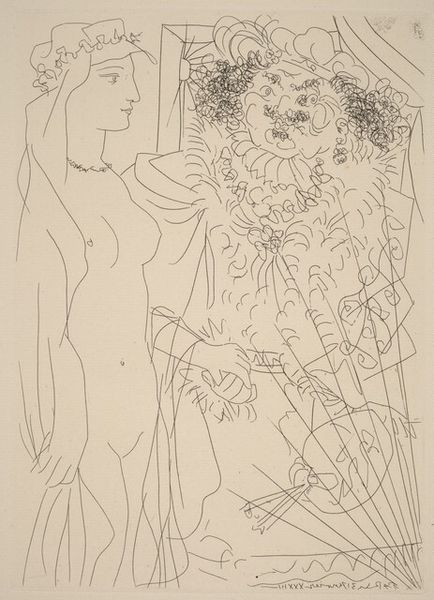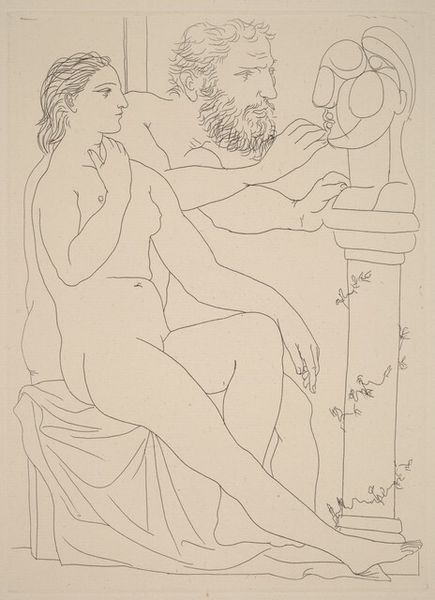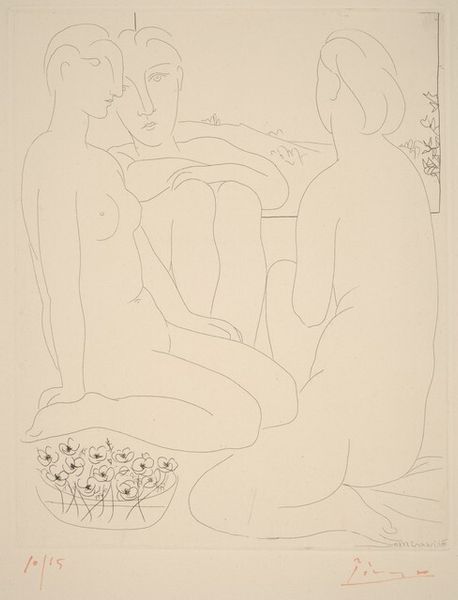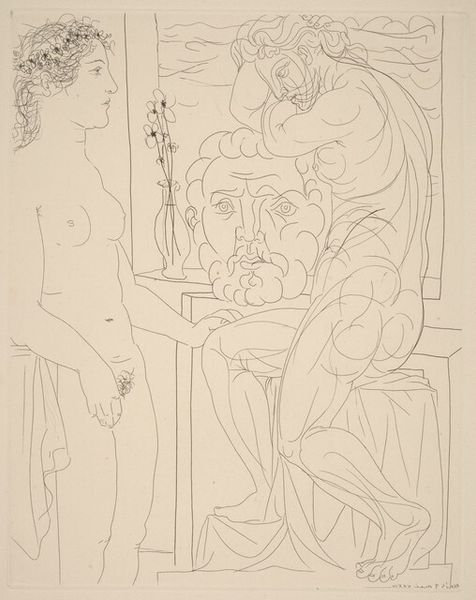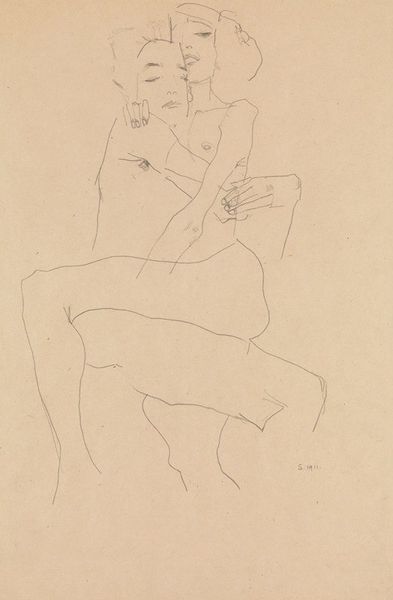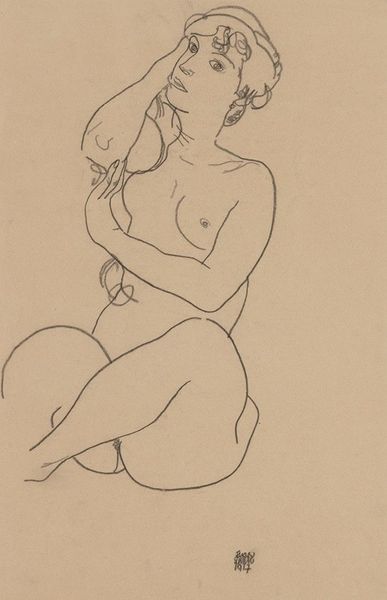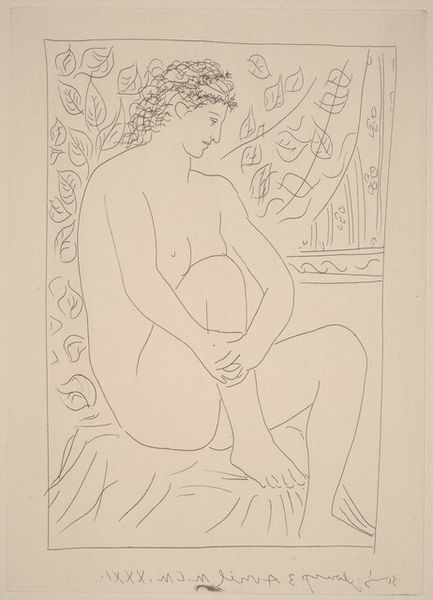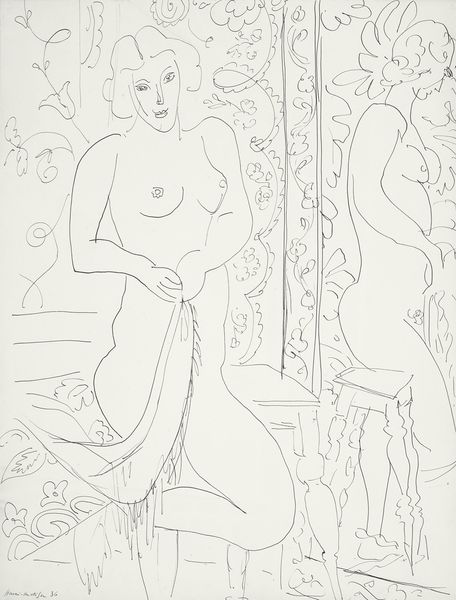
Sculptor with his Model, a Sculpture of Her Head, and a Bowl of Anemones (Sculpteur avec son modèle, sa sculpture et un bol d'anémones) 1933
0:00
0:00
drawing, etching, ink, sculpture
#
portrait
#
drawing
#
cubism
#
etching
#
figuration
#
ink
#
sculpture
Dimensions: plate: 26.5 x 19.2 cm (10 7/16 x 7 9/16 in.) sheet: 50.2 x 38.5 cm (19 3/4 x 15 3/16 in.)
Copyright: National Gallery of Art: CC0 1.0
Curator: Looking at this ink and etching from 1933, "Sculptor with his Model, a Sculpture of Her Head, and a Bowl of Anemones," by Pablo Picasso, I’m immediately drawn to the raw, almost skeletal quality of the lines. It feels incredibly immediate, like a direct trace of his thought process. Editor: There's a symbolic richness here. The flowers, the laurel wreaths, the sculpted head…it feels like Picasso is creating a personal mythology, a little world complete with its own allusions to art, beauty, and creation. The female figure looks at the bust and this act could mirror the myth of Pygmalion where the sculpture comes alive. Curator: Absolutely, and consider the labor involved in an etching like this. It’s not just a sketch; there's the acid biting into the metal plate, the precise inking and printing. The subject of the artist creating another artist lends layers of complexity to labor's involvement in this artwork's physical process and the depiction within. How does this relate to our understanding of creative labor in art production? Editor: I see those overlapping planes and shifting perspectives as deeply symbolic of Picasso's relationships. Look at the positioning; it is layered and creates different focal points. Who has agency over the other when these objects are created? And then consider what the lines give us - there's something classical about this imagery too, isn’t there? Curator: There is, a kind of fractured classicism that is also inherently modernist. And, from a materials perspective, look at the impact of the stark black ink against the stark paper! The limited material palette amplifies the expressive quality of each individual mark. Where are the anemones taking us thematically? Editor: The anemones, traditionally, represent fragility and ill-fated love. Combined with the presence of the sculptor and the sculpted model, there’s an intense sense of artistic power juxtaposed with a kind of melancholy. Perhaps the artist is immortalizing not just beauty, but its inherent impermanence. Curator: Precisely, by immortalizing them he dooms the components to material existence with a heavy hand. What is Picasso ultimately doing with material choice when this work seems, so ostensibly, anti-monumental and vulnerable? Editor: Looking at Picasso through a symbolist lens gives such deeper nuance and connection to a collective cultural conscious and myth-making, which opens the work up beyond just form. Curator: The relationship of form and material here suggests a powerful statement about the human experience; and now the whole experience with the artwork begins again, as someone holds it, experiences it, sells it… Editor: Exactly! It's these layers of significance that make Picasso’s work so compelling and enduring and that will be interpreted for as long as human beings wish to look into it.
Comments
No comments
Be the first to comment and join the conversation on the ultimate creative platform.

